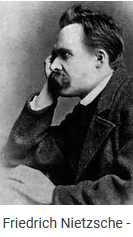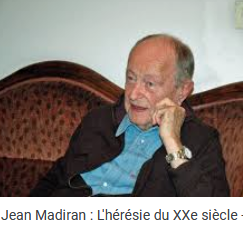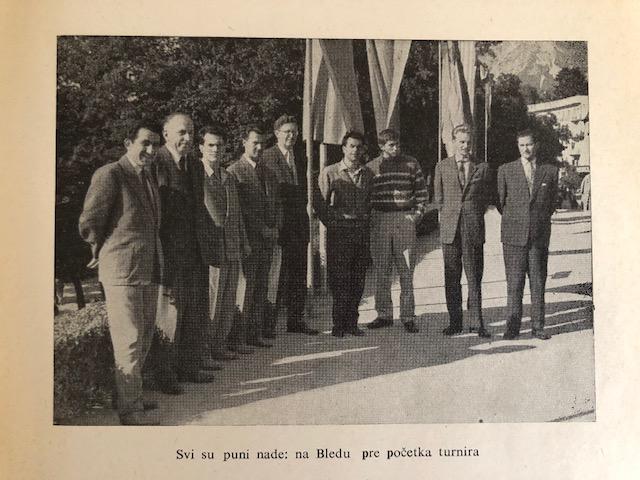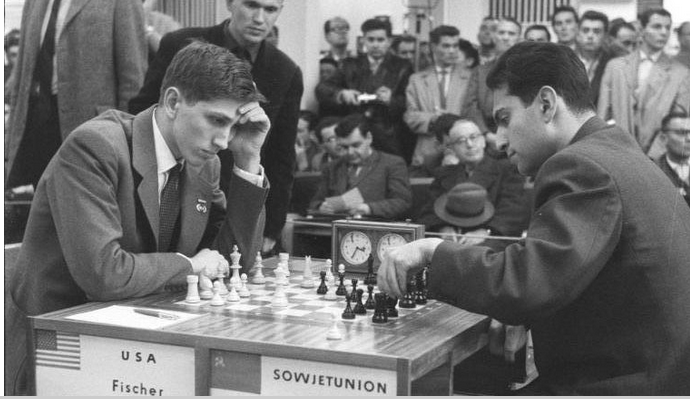Some technical problems for the Master, struggling to find the classroom (for someone who has left the teaching staff, this is normal!)
A good presence for this last course of 2020 where the Master took care not to put off the newcomers too much by presenting an accessible fairy tale, the details of which are given below.
Master's words
 "The man to come will have a sickly fear of danger. He will adopt and glorify the posture of the victim. He will be a permanently angry man who will disguise its weakness and fear of suffering as moral greatness" (F. Nietzsche).
"The man to come will have a sickly fear of danger. He will adopt and glorify the posture of the victim. He will be a permanently angry man who will disguise its weakness and fear of suffering as moral greatness" (F. Nietzsche).
"It is not the revolution that has made France world famous, it is the prestige of France that has spread "revolutionary ideas" throughout the world. France has gained nothing. [...] Two hundred years ago, France was the leading nation in the world. It was so by the number of its inhabitants, by military power, by economic wealth, by letters and arts, by intellectual and moral prestige. Since 1789, through ups and downs, it has constantly fallen from its first material and moral rank" (J. Madiran in 1990).
"I am independent, alone and poor, and I am beginning to believe that this is a strength" (Y. Farge).
"I was struck by the censorship exercised in this country of freedom. France suffers from the dictatorship of the single thought" (A. Orlov in 2013). What would he say now that 19 months are spent in prison for opinion?
"Apparently, the junction of leftism and Islam is failing" (Papacito on 23-10-2020, already quoted on 26-11-2019).
"The life expectancy is 82 years and the average age of the covid dead is 84, so this virus has saved us two years" (Franjo Reno).
"I wish that for just one time, you could stand inside my shoes, and for that one moment I could be you: you'd know what a drag it is to see you" (B. Dylan with 55 years to spare).
"Only dead men are free" (B. Dylan, 55 years later).
"She told me I was old, ugly and a prick -- you're lucky, she usually leaves without giving any explanation" ("You only die twice").
"I am a mixture of anarchist and conservative, in proportions yet to be determined" (J. Gabin in "Le président", 1961).
"I was for a long time one of the most hated. It was a sorrow, it is now a pride" (ibidem).
"In every burglar, there is a police prefect sleeping" (ibidem).
"How about a cruise on the Nile? -- There are two things I hate most of all: the heat and the natives -- so we'll go" ("Death on the Nile", 1978).
"I know from experience that women are not attracted to men who are good to them" (ibidem).
"For Wesley So, playing chess is a way to honour God, "whatever I accomplish I offer up to Him as a sacrifice of praise". My compliments to the new US Champion.
Nikolai Grigoriev is, as you know as well as I do, the (very) great specialist in pawn endgames. So much so that, on the rare occasions when he is wrong, it takes a tiny fraction of the rest of the world 50 years to notice. And the majority, 75 years to... not realise it. Apart from the inevitable conjugate squares, what I find most instructive in this example is that it is not always ideal to keep a tempo in reserve. Let's also remember that if a waiting move is necessary to win the vertical opposition, another one is necessary for... the horizontal opposition which will follow!
The 19th century study by several authors (including the famous Kling & Horwitz) would be unpublishable nowadays, as it has 4 keys. But all of them arrive, at the 3rd move, at the same position as in the diagram, after transmission of the line. And the party begins... An incredible royal circuit is necessary before considering driving the rook on the front row, realizing with delay the idea that immediately came to mind. In passing, a revision of Ercole del Rio's classic (1750) with Rook and pawn-Bishop against Bishop.
For January, the terrible struggle of 3 passed pawns on both sides, where the slightest mistake often costs the whole point, then a curious female bishop endgame and finally, easier, an exercise without pawns.


The game of the day is historic in two ways: it gave the winner of the Candidates tournament a dream score (4-0) against the man who would go on to achieve a 6-0 double in the Candidates (tournament turned match) 12 years later. It began an unbreakable friendship between these two great champions. The winner's story is unique in the history of tournaments.
A special Christmas fairytale course (a bit early) with some surprises. Adabashev's problem is to take back the last white move and replace it with a mate. And similarly one floor up, then another and finally a last one. Hide the solution to appreciate it, then present it to your club.


Then a nice example of the Master of Twins (see Thèmes/64 n° 6 to 12, 1957-1958), chronicler and problemist who helped so much to the development of artistic Chess in our country (at the exact opposite of the current media representatives, self-imposed, of Chess), a twin, thus, with a (very simple) retrograde analysis. He must be turning in his grave when he sees the monstrous discriminants currently practised in twins, triplets, quadruplets... up to the apotheosis of ugliness, the zeropositions, which at least have the merit to qualify exactly their authors.
Another problem of the same benefactor of Chess, where all the units are used, including those which are absent from the diagram: you never saw that? It is however easy. Then a French work too, where you can't see what the opponent is playing. And what else? Would you like us not to see our own moves?
Training: we start with the famous devil's game of Tartacover. In his breviary, he tells us about Paolo Boï (1528-1598) playing against a young girl of dazzling beauty. He reaches a winning position but the latter, seeing that she is mate in 2, changes the white Queen into... a black Queen. Paolo then realises that he is playing against the devil. However, he realises that with the black Queen there is still mate in 2, but differently. It's up to you to beat the devil (twice)!
Some other 2#, our favourite being the last one (Finnish) but some will make you think a bit (beware, Mari's problem really does have 3 white rooks). The 3# are nice. The 5# is very nice: "the Bishop guided by the Queen", I commented in 1963.
Model promos and mates by the great Abdu. Then an h#3 by a remarkable author who remains young, especially since it is... his name! A festival of promotions in the h#7 3-solution. The 5# inverse of our national hero is easier than the s#5 usually are (ask Mr Gamnitzer) and has a nice chameleon echo.
Good luck with that. Deus vos custodiat.
Comments
1 Capron On Sunday, november 29, 2020
2 Alain On Wednesday, november 25, 2020